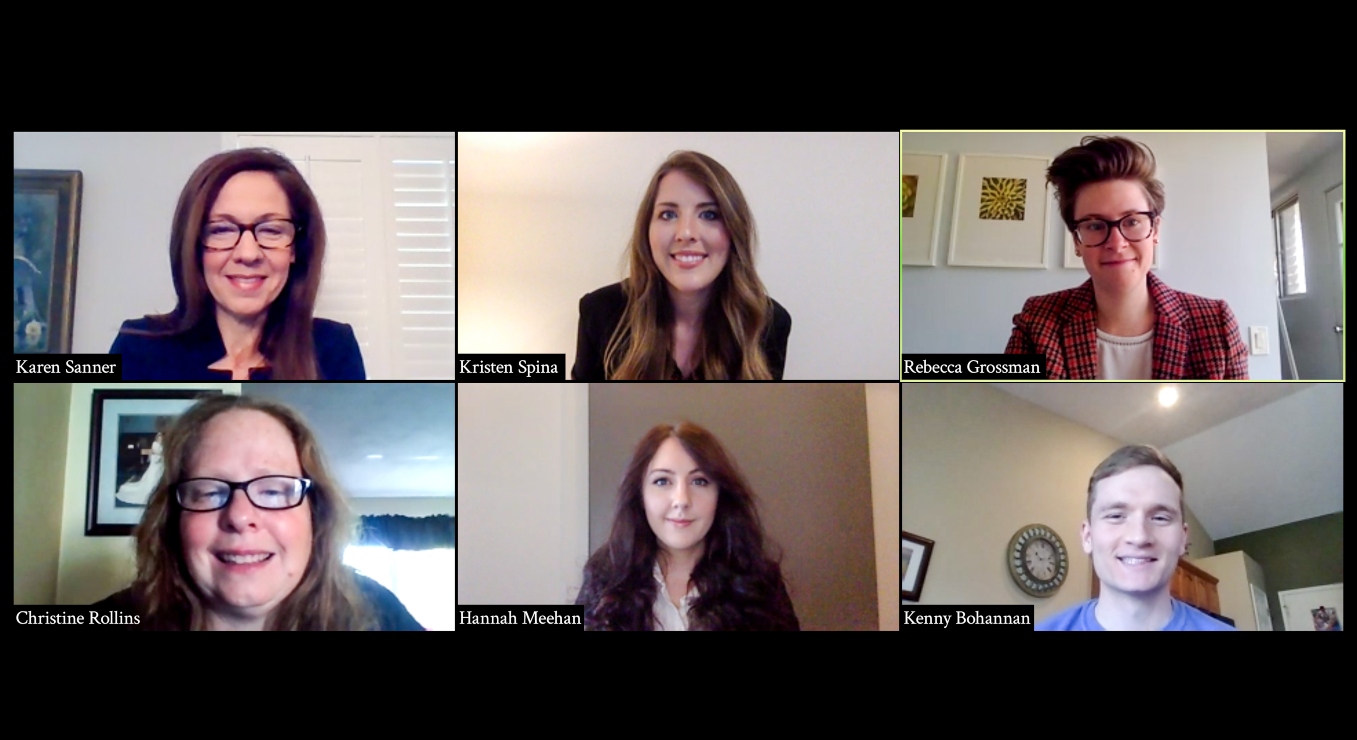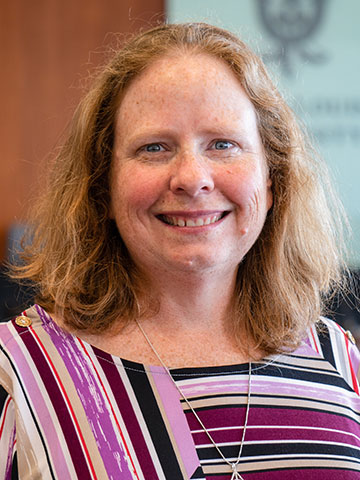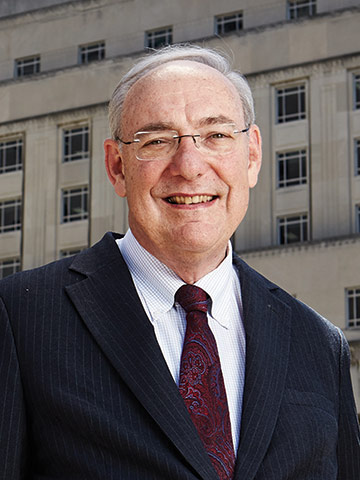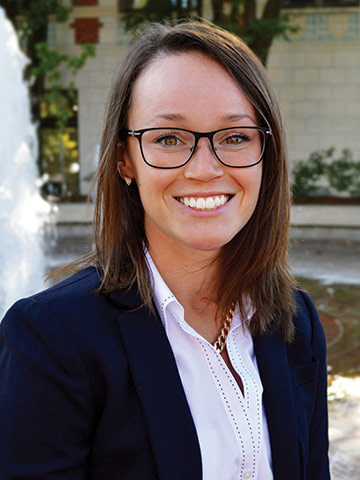Students Find the Bright Spot in Learning How to Make Virtual Appellate Arguments
In a typical SLU LAW academic year a handful of top students compete in an internal Moot Court II competition, conducted before actual judges in a courtroom full of onlookers.
Judges hammer the students with questions compelling them to expound on their arguments, and at the end of the day, one team and one oralist emerge victorious.
This year, students had to adapt.


“Along with 11 of our dedicated alums, these students ‘Zoomed’ into our mock courtrooms, represented their clients and argued issues that are currently before the highest courts of the land (immigration and the Second Amendment),” said Professor Chris Rollins (’96), director of the Legal Research and Writing program.
Mastering written and oral advocacy skills is a key part of the SLU LAW education. Each year students in the school’s appellate advocacy program along with first-year law students, as part of their legal research and writing course, participate in oral arguments as the culminating activity of the program. Throughout the semester they have researched and drafted arguments on both sides of a topic chosen by their faculty member.
“The key aspect of the program is that the students have learned to be persuasive advocates for each side,” Rollins said. “They learn that to be the best advocate, they need to understand what each side’s strengths and weaknesses are before jumping into litigation.”

“In appellate courts, oral arguments can be decisive, especially in close cases,” said dean emeritus Michael Wolff, former Missouri Supreme Court Chief Justice. “Properly framed, a good appellate argument is a discussion among judges on the bench and the lawyers representing the parties. The conversation-argument on video is not the same as in-person arguments, but it is the next best thing – what an advocate wants is the opportunity for judges to follow up their reading of briefs with questions and discussions that go beyond the written materials.”
While not ideal, this year’s unique circumstances due to the COVID-19 pandemic presented an opportunity for law students to learn these skills in a new way, right alongside Supreme Court justices across the country who are doing the same thing for the first time in history.
“While nothing can replace the exciting atmosphere of a traditional, in-person oral argument, I found virtual arguments functional and productive,” said 2L Kristen Spina, one of this year’s competition winners. “The challenges of converting to the virtual arguments were met with faculty support and collaboration. We experimented through the Zoom platform prior to arguments. I practiced in front of the camera just as I would have at a podium for the traditional setting.”
“After the initial awkwardness and continued practice with other students, maintaining passion and cohesiveness during the argument felt as natural as it would have been in person,” said 2L Hannah Meehan, this year’s other competition winner. “The flow of questions and answers was essentially unimpeded by the use of a screen, and if anything, presenting from home took away some of the nerves that precede an oral argument.”

“As an alum, it is really eye-opening,” said Paige Seggebruch (’18), counsel at Reinsurance Group of America, Incorporated, who began volunteering as a moot court judge last year and continued this year as a judge for the LRW students. “It hasn’t been that long since I was a student in their position, and I remember how terrified I was, wondering ‘Who are these actual attorneys who are going to be there judging me?’ Now I’m on the other end of it: ‘Did my questions sound okay? Was I able to help them feel more comfortable in their presentation?’ It’s really rewarding to be able to provide feedback and see their development.”
The students’ successful transition garnered high praise from their professors and from the volunteer judges alike.

“Our students have shown a remarkable ability to adapt to this new learning environment. We are still teaching our students the art and skill of formal oral arguments in a courtroom and adding instructional material that teaches them to persuade in a virtual setting,” said Professor Karen Sanner. “I watched my students meet and exceed expectations in their arguments, and I am grateful that we were able to modify our instruction and keep this important part of their law school experience.”
“Having to adjust on the fly to something you may not have anticipated but is thrown your way will definitely serve them well,” Seggebruch added. “I work in a company where we’re starting to do more and more video conferences with each other – we didn’t do any of them when I started and now they’re everywhere. Even counterparties that I would’ve never seen in person are now requesting video negotiation. With technology it’s going to be more slowly integrated in the legal field, but more and more integrated over time.”
Wolff agrees with that assessment.
“After COVID time is over, some appellate courts may make use of what they learned and schedule relatively uncomplicated arguments [virtually], especially where the lawyers and judges would otherwise have to travel to a distant city for the arguments,” Wolff said. “Law students who have grown up with video technology of all sorts will get valuable experience with these virtual arguments in law school. They will adapt to this new way of doing business far better than older lawyers and judges. Today's students will graduate into a different world than the legal world they entered when they started law school.”
— By Jessica Ciccone, with contribution from Maria Tsikalas